Family Sebastidae | Phylum Chordata Genus Sebastes Rank Species | |
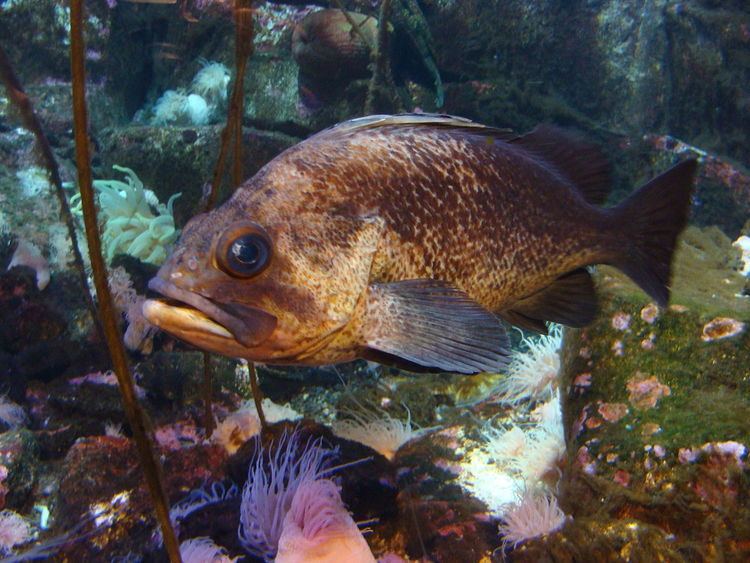 | ||
Similar Copper rockfish, China rockfish, Tiger rockfish, Brown rockfish, Yellowtail rockfish | ||
Quillback rockfish
The Quillback rockfish (Sebastes maliger) (also known as the Quillback seaperch) is one of 130 species of rockfish and primarily dwells in salt water reefs. The average adult weighs 2-7 pounds (0.9 – 3 kg) and may reach 1 m (3 feet) in length. Quillback rockfish are named for the sharp, venomous quills or spines on the dorsal fin. Their mottled orange-brown coloring allows them to blend in with rocky bottom reefs. Quillback rockfish eat mainly crustaceans, but they will also eat herring. They are solitary and minimally migratory, but not territorial, and give birth to live young (viviparous). They are a popular sport fish, generally caught in cold water 41–60 m deep, but also to subtidal depths of 275 m.
Contents

Quillback rockfish
Distribution
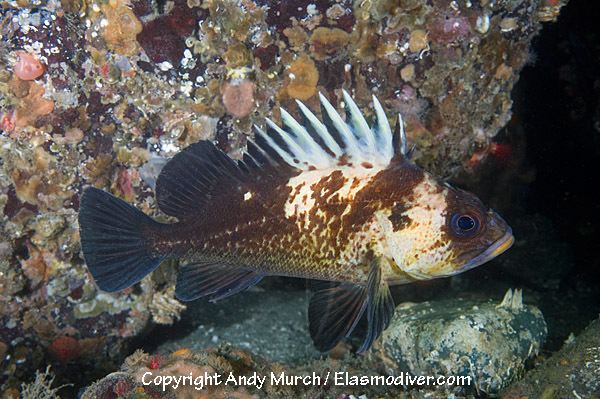
Quillback rockfish live along the Pacific coast from the Gulf of Alaska to the northern Channel Islands of Southern California. Like other rockfish species, quillbacks live on the bottom, perching on rocks or hiding in rock crevices. The juveniles stay mainly along the shore, in reefs, sand and eelgrass, while the adult rockfish live in the deeper waters. They are for the most part solitary dwellers, rarely being found in groups. They are rarely found in the open ocean, generally preferring to stay close to kelp, rocks, coral, or lodged in crevices or holes. Despite this, they are not territorial. High densities tend to coincide with peak plant growth. They occupy a variety of habitats in many different areas on the west coast of North America.
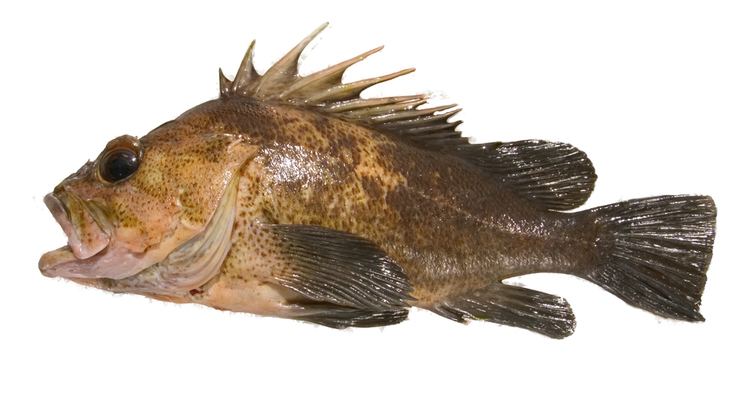
Depending on the location, quillback rockfish are minimally to moderately migratory. On the high-relief rocky reefs of Puget Sound, Washington, they maintain small ranges of 30 square meters, while on low-relief reefs they may stay within a larger, 400 - 1500 square meter, area. They sometimes move seasonally to low-relief reefs when kelp is present (summer).
Characteristics

Quillback rockfish are mottled orange-brown with yellow spotting around the head, gills, and front of the dorsal spines. The average adult weighs between 2 and 7 pounds (about 0.9 – 3 kg), and the maximum reported length is 24 inches (61 cm). Their coloring allows them to blend well with rocky bottom reefs and boulder barriers where they usually live at subtidal depths up to 75 m, but are also found at depths up to 272 m. Quillbacks obtain their name from the sharp, venomous quills or spines on the dorsal fin. At the base of the spines are venomous glands, which excrete poison into the spines. The stinging spines protect the quillback from predators. They are not extremely toxic to humans but can still cause pain and infection.
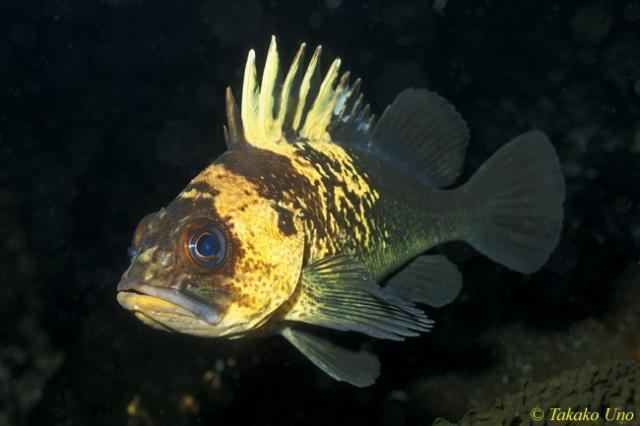
Rockfish have a gland that produces and absorbs gas as needed, to expand or deflate the swim bladder, which enables the fish to move through different water depths. When a rockfish is caught at depths of 60 feet or more and pulled to the surface, the swim bladder cannot adjust quickly to the change in water pressure and overfills with air - pushing the fish's stomach out of its mouth and causing damage to other organs. This does not affect the eating quality of the fish; however, significant numbers of rockfish inadvertently caught with other species are wasted in this manner.
Food
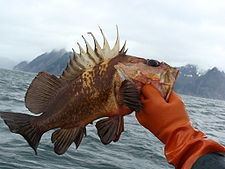
The quillback rockfish’s diet consists of herring, demersal, pelagic crustaceans, crabs, amphipods, euphasiids, and copepods. They usually feed during midday, sheltering in holes and cracks at night.
Reproduction
Quillbacks are viviparous, or they give birth to live young, spawning anytime from March to July. The juvenile rockfish live in eelgrass, eating zooplankton, shrimp, and krill. They move to more rocky habitats as they mature.
The size of quillback rockfish varies with location. The overall length at 12 years off the Alaskan coast has been reported as about 30.5 cm, while off California it is 18.5 cm. The overall length at which 50% of the fish are mature has been reported to be 30.5 cm off the coast of Alaska and 23.5 cm off the California coast. The maximum recorded size for a male was 60 cm.
Fishing
Rockfish as a group are important to the fishing industry as a food fish. Quillback rockfish have white, flaky meat with a delicate flavor, as befits deep-dwelling cold water species. From Oregon to southeast Alaska quillback rockfish are an important part of the inshore sport commercial fishery and are also taken by party and private vessels and divers. They are often caught in deep, cold water by bottom fishing with herring or jigging. Most rockfish are landed in deep water by anglers using bottom-fishing tactics or mid-water drifting. These fish are not known for great battles or for large size, although the larger specimens may provide good sport. According to the Oregon Department of Fisheries and Wildlife, the sport harvest of nearshore rockfish (such as quillback, copper and china rockfish) off the Oregon coast has been 6-12 metric tons annually between 2004 and 2009. This is within the sport harvest limits set to maintain the resource.
Similar species
Similar species are the brown rockfish, the copper rockfish, and the China rockfish. The brown rockfish is commonly mistaken for the quillback rockfish. The China rockfish, on the other hand, does not generally resemble the quillback rockfish.
